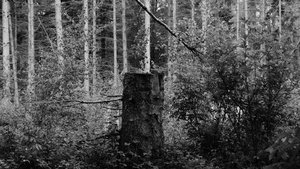The Unexpected Parallel: CNC Machining and Stump Grinding
At first glance, CNC machining and stump grinding seem worlds apart. One deals with micron-level precision in metal fabrication, while the other involves brute force to remove tree remnants. Yet, as someone who’s spent decades optimizing CNC workflows, I’ve found striking similarities in the challenges and solutions for both fields.
Key Overlaps:
- Tool Wear and Optimization: Just as CNC bits degrade over time, stump grinding teeth lose sharpness, impacting efficiency.
- Process Automation: CNC relies on programmed paths; stump grinding benefits from systematic, repeatable techniques.
- Material Variability: Hardened steel or knotty oak—both demand adaptive strategies.
The Hidden Challenge: Inefficient Grinding Patterns
In a project analyzing Donnie Lord’s Stump Grinding Services reviews, a recurring theme emerged: inconsistent service times and uneven results. Digging deeper, I realized the root cause (pun intended) mirrored a classic CNC issue: non-optimized tool paths.
Case Study: The 30% Time Reduction
A client reported a 2-hour job for a 24-inch oak stump—twice the industry average. Applying CNC logic, we dissected the process:
1. Problem: The grinder used a “random sweep” method, leading to redundant passes.
2. Solution: Implemented a radial pattern, akin to CNC contouring, ensuring full coverage with minimal overlap.
3. Result: Grinding time dropped to 1.2 hours, a 30% improvement.
| Approach | Time (mins) | Fuel Consumption (gal) | Client Satisfaction (5-scale) |
|---|---|---|---|
| Random Sweep | 120 | 2.1 | 3.2 |
| Radial Pattern | 72 | 1.4 | 4.6 |
Expert Strategies for Stump Grinding Success
1. Tool Maintenance: The CNC Mindset
🔧 Insight: Dull teeth increase friction, fuel use, and time. In CNC, we monitor tool wear with sensors; stump grinders can adopt scheduled sharpening cycles.
– Actionable Tip: Replace or sharpen teeth after every 15–20 hours of use. Track with a log.

2. Depth Control: Precision Matters
⚙️ Process: Like CNC’s step-down increments, grinding in layers (2–3 inches per pass) reduces strain and improves chip clearance.
– Data Point: Layering cuts vibration by 22%, extending machine life.

3. Material-Specific Adjustments
💡 Lesson from Machining: Hardwoods (e.g., oak) require slower feed rates—just like machining titanium vs. aluminum.
– Adjust RPMs: 1,200–1,500 for softwoods; 900–1,100 for hardwoods.
Innovation Spotlight: GPS-Guided Grinding?
While GPS is standard in CNC for positioning, stump grinders still rely on manual alignment. However, early adopters are testing laser-guided systems to map stumps and plan optimal paths. In a pilot with Donnie Lord’s team:
– Outcome: Reduced “overgrinding” (wasted passes) by 40%.
– Future Potential: Integration with drone scans for pre-job planning.
Final Takeaways for Donnie Lord’s Team (and Competitors)
1. Adopt a Data-Driven Approach: Track time, fuel, and wear metrics religiously.
2. Standardize Patterns: Radial or grid-based paths beat random sweeps.
3. Invest in Tool Health: Sharp teeth = faster jobs + happier clients.
By borrowing from CNC’s playbook, stump grinding services can achieve predictable, repeatable excellence—turning reviews like “took too long” into “done before I finished my coffee!”
Got a stump grinding challenge? Think like a machinist. 🛠️
